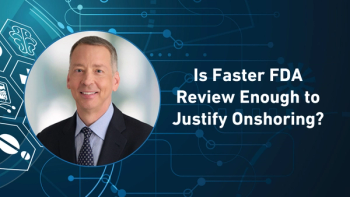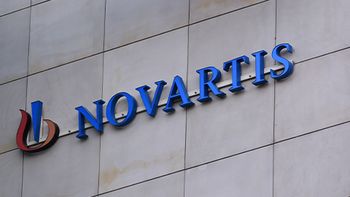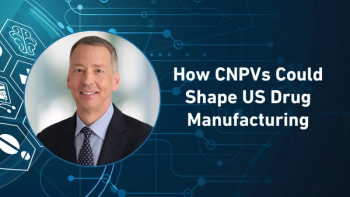
- Pharmaceutical Commerce - March/April 2014
Not just 'social listening' but social understanding
How new social health analytics tools are supercharging pharma's quest for patient insight
Fig. 1. The social media inputs needed to get to useful information for determining patient outcomes. Credit: Treato
It is widely recognized that social media is a powerful forum for patients and providers to share views about healthcare. The FDA even recently issued a first set of proposed guidelines that acknowledges social media’s growing critical role as a source of open communication and patient interaction. Today one out of three US adults go online for information, support and advice about their health; more and more patients are coming to their physicians with opinions formed about what therapies they might need, what drugs address those needs, and how well a therapy is progressing—the entire patient journey.
These online conversations have important implications for biopharma. Through the crop of available “social listening” tools, pharma can “listen in” but the latest technology is helping them go even farther to new depths of understanding about the empowered online patient. Such technology can now turn the massive amounts of disparate online patient conversations into one structured “patient voice” that can significantly impact healthcare’s product and business strategy—from brand lifecycle management to market intelligence and education to R&D.
The key is knowing where and how to look. And getting past a few prevailing notions about what social media is all about when it comes to the pharmaceutical industry. This article attempts to provide some useful guidance on charting the often murky social media waters to reach the empowered patient online. Here are five key things to consider as you make your way through that patient kingdom:
1) More scale, less ‘noise’
2) Deciphering the patient message
3) Going beyond sentiment trending
4) Getting insights in real time
5) Be strategic: it’s an enterprise play
1) More scale, less ‘noise’
Getting the most out of social networks means going far beyond Facebook or Twitter. There are literally thousands of different places for patients to interact, comment and share on the social health web. What’s known as the “long tail” of the Internet consists of scores of interesting online destinations, focusing on specific therapeutic categories, patients with certain shared backgrounds, areas of interest or geographical location.
Tackling this breadth and scale is a serious technical challenge, yet is critical to rendering the patient voice comprehensively. As an example, at Treato, where we gather, aggregate and analyze patient-generated content on the web, we sift through and process around one million healthcare related posts daily—from roughly 3,000 different health-related sites. These figures are on a continuous growth trajectory.
Making sense of such large scale, dynamic patient content is complex. A crucial first step requires identifying all the user generated content (UGC) that includes health-specific content, and then eliminating the “noise.” As FDA guidelines now suggest, this independently generated patient content is at the heart of what social media in healthcare is all about. But to make sense of it, there is a need, first, to filter commercial content and spam, which can account for as much as 80% of online content.
Another factor to consider is hearsay, that is, posts that talk about what someone heard or read about a treatment or disease, as opposed to something they experienced firsthand. For example “I started feeling depressed after taking the drug” is very different from “I heard that this drug can cause depression.” Therefore, including hearsay in any social media analysis can significantly compromise its reliability and create bias throughout the decisionmaking process.
The foundation of this sophisticated filtering is natural language processing (NLP), a method of analyzing text or speech that derives meaning and structure from UGC (see box). Once the content has been collected and filtered, only the “pure” patient- and caregiver-written posts about personal health and treatment experiences should remain.
Fig. 2. Treato’s experience in accessing patient conversations and websites to date
.
2) Deciphering the patient message
Finding key messages and insights in UGC can be like looking for a needle in a haystack. The content patients and caregivers post online—like most social media updates—is typically written like a story, in a format that is technically known as “unstructured.”
Consider this example:
“I was diagnosed last year with MS after some vision problems and numbness. My dr. started me on Avonex, but I developed an allergy to interferon and moved to Copaxone.”
A human being can read this patient-written post and string together a sequence of events, map the mentioned drugs to a condition, identify a side effect followed by the switching behavior. But when you are trying to analyze and distill meaning from hundreds of thousands of MS-related posts, it is humanly impossible to pick apart each unstructured post, or to connect the disparate dots across such a huge array of data. Automated methods must be implemented to convert the vast set of unstructured information into a structured, usable set.
The right approach doesn’t just automate this process but can translate this unstructured content into meaning based on well-defined reference information or fields. In the case of healthcare, such fields can consist of “switching behavior,” “side effects,” “initially diagnosed,” and so forth. In this sense the unstructured content becomes structured.
However, to achieve that, extensive medical expertise must be employed, and since this task is conducted by machines that expertise should be an integral part of any algorithms deployed to decipher a patient’s post. In this case, health-specific ontologies will inject the specific domain knowledge into the mix: drugs, treatments, indications, symptoms—and the relations between them.
Patients and caregivers also talk (and write) in a vernacular that can be quite different from the language HCPs use when talking about medication and conditions. For example, patients may just as easily use the term “heart attack” when expressing an emotion of shock, and not mean “myocardial infarction.” Ambiguity arises frequently within healthcare-related content. Abbreviations like “BP” are a representative example, referring to Blood Pressure in one context, Bi-Polar in the context of a mental health forum, or British Petroleum in a non-health forum. At the same time, patients may use different terms to express the same thing—a patient complaining about “leg pain” may be experiencing the same thing as another patient describing their “calves hurting.”
Well-organized NLP techniques, algorithms and vocabularies create structure and meaning out of this content.
3) Going beyond sentiment trending
When it comes to pharma and the vast amount of UGC on the social health web, merely tracking brand mentions is not enough. Through social health analytics, it is possible to drive strategy throughout the brand lifecycle and product development process by answering such key questions as:
- Where is my brand losing or gaining market share, and more importantly, why?
- What are the reasons driving drug starts, switches and stops?
- How can I improve adherence and compliance?
- What are my patients’ biggest concerns, fears and hopes?
- How are physicians impacting my patients’ decisions? What gaps or misperceptions are driving undesired behavior?
With the right tools, pharmaceutical companies can apply analytics to social media content to gain insights into various patient segments—before, during and after a prescription is written. This can include insights about key characteristics, emotional triggers and what specific language patients are using when they talk about their conditions or medical concerns. An additional benefit is a clearer picture of the digital therapeutic landscape, to better understand where specific patient segments are sharing their experiences online, in order to better understand how to reach them.
It goes without saying that patients experience different feelings toward a treatment method or medication depending on their different emotional triggers. Social media can unveil patient attitudes toward disease progression as they discuss their attitude change over time, for example as their condition gets better or worse, or as they move from being newly diagnosed (and feeling “hopeful,” or “uncertain”) to being long-term patients adjusting to or considering various medications (and feeling “anxious,” “frustrated,” or “concerned about cost”).
Traditional sentiment analysis does not differentiate such critical nuances. For this, technology needs to go beyond simple trigger-word analyses to extract deeper actionable insights. Such technology can include special algorithms working in tandem with medical ontologies and knowledge databases specifically designed to enable the deeper level of understanding required in healthcare.
4) Getting insights in real time
While traditional research methodologies are still required to gain insights to patient experiences, such methodologies are limited in their ability to provide continuous, real time, unsolicited insights. At best, they do so retroactively, and in a highly mediated, structured format that has limitations of its own.
In comparison, social media’s inherent openness makes it a source of continuous, unmediated content. This becomes especially important during disruptive market events, whether anticipated or not, as well as such phases of the brand lifecycle as the pre-launch period; post-launch; during new competitive entries; all the way through patent expiry.
Insights about patient and caregiver experiences through social media in real time can increase pharma marketers’ ability to respond quickly and adjust to patients’ needs. In the early launch time frame this type of agility can be critical to successful penetration. For example, a recent launch of a drug noted that it should be taken with food. Although that was documented in the leaflet, some patients did not understand or follow this guideline, which very quickly resulted in many of them turning to social media to share their questions about the best ways to avoid digestive discomfort. These social media discussions were a red flag for the manufacturer to promptly increase and focus their educational efforts around this subject, and to inform their support hotline staff so that patient inquiries would receive the optimum response. An additional side benefit was hearing from patients with recommendations for what foods to take or avoid.
Similar social media analyses can turn into rapid responses to potential compliance issues, competitor reactions, dosage profiles, methods of application or operational aspects of delivering the drug, such as if a patient can take the medication at home or at a clinic. By quickly understanding the whole patient community’s needs and concerns, changes can be implemented, or at least accelerated.
5) Be strategic: it’s an enterprise play
Listening to and embracing the patient voice should go beyond a brand or a franchise scope. It is a unique opportunity to change the way pharmaceutical companies manage their business. The power of that level and depth of understanding of patients can and should extend beyond any one-off marketing campaign or new product launch to ongoing strategic decisionmaking across the enterprise, from marketing to sales to R&D.
As a source of unsolicited information, social media can also play a critical role in driving process consolidation when it comes to adverse event reporting (AER) across the organization.
How well a pharmaceutical company reports and addresses AEs associated with its brands affects the entire organization. Through social media, companies can take their organizational AER effort one step further by accessing and analyzing relevant patient content to not only enable a timely and appropriate response to AEs early on, but pro-actively drive the efficacy and safety of their products. We are seeing this with several companies already, for whom we have incorporated automatic AER capabilities built into the analytics platform. In 3—5 years I am convinced that social media-generated insights will play an increasingly important role in early identifying AEs and initial signals of potential AEs for both pharmacovigilance and new product development.
In the meantime, a cohesive approach that includes all the relevant organizational touch points can form the basis for standardizing procedures, like AER, across all parts of the business. In this sense, the right solution for conducting social media analysis can and should serve the business as a whole, supporting and uncovering new ways to weave the patient voice into strategic decisions that can strengthen performance as well as its patient focus. It should be scalable across brands, and extend to non-marketing activities as well.
The biggest opportunity for pharma in decades
Looking forward, analytics based on social media may completely revolutionize how pharma companies make decisions to not only shape strategy but predict trends and future behavior.
For today, it is important to understand that the patient voice continues to grow louder, in large part, thanks to social media. Companies that embrace it to become more attuned—indeed closer—to their patients will be that much better positioned for success.
Many pharma executives consider social media a risky proposition, but I would counter that social media provides an amazing opportunity. With new technologies at their disposal, pharmaceutical companies can make sense of billions of online patient discussions in social media to make better, smarter decisions. In this new reality, the empowered patient is no longer an enigma, but a true partner in the quest for a patient-oriented healthcare and improved outcomes.
ABOUT THE AUTHOR
Ido Hadari is CEO of Treato (
Articles in this issue
over 11 years ago
The pharma rep profession will be immortalover 11 years ago
Six factors driving new specialty pharmaciesover 11 years ago
Common misconceptions about the orphan drug designationover 11 years ago
So you are 'in the cloud;' now what?over 11 years ago
Network effect of industry-crowdsourced physician dataover 11 years ago
Make your CRM vendor a true partner to your sales teamover 11 years ago
New adverse-events reporting service speeds results to payersover 11 years ago
Acquisitions realign UK logistics services, cold chain packagingover 11 years ago
After a relatively flat year, 2014 could be big for pharma M&ANewsletter
Stay ahead in the life sciences industry with Pharmaceutical Commerce, the latest news, trends, and strategies in drug distribution, commercialization, and market access.





